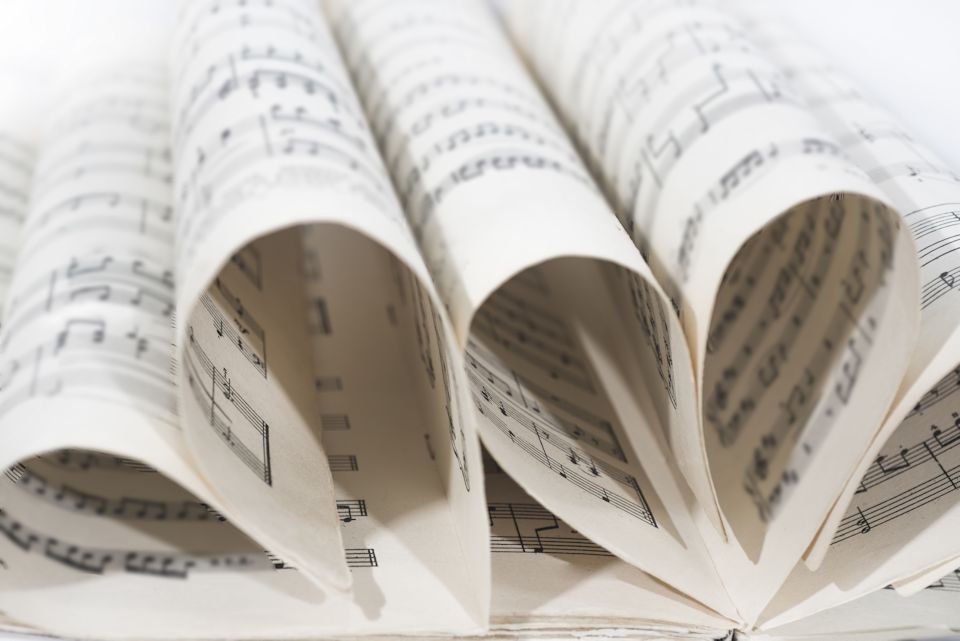A hospice chaplain finds, “Music can awaken the deepest level of emotional response in positive ways.” It’s a tool that shares Jesus’ love.
KAREN SHEARER
Grace UMC, Madison, MO
I had arrived on a good day. Betty was awake in her recliner and smiled at me as I entered her room. Her baby doll was resting in her arms, and every so often, she would pat it absently. I squatted down awkwardly by the recliner and talked to her about taking care of her baby, commenting on how attentive she was to her baby. “Oh, no, no, no. Yesh, yesh, yesh,” said Betty in response. I wanted to stroke her hand but knew better; if Betty held my hand, she wouldn’t let go! She continued to mumble half-formed words, perhaps for me but more likely for her baby. She alternately stroked her baby doll and reached toward my arm.
Then I told her I wanted to sing a song with her. I assured her that it was a song she knew and began, “Jesus loves me, this I know …” Betty’s eyes fastened on mine, and she began to join in, “For the Bible tells me so. Little ones to him belong. They are weak, but he is strong.” I patted her baby doll’s bottom in gentle rhythm to the words, and she smiled at me. After singing the remainder of “Jesus Loves Me,” we sang “This Little Light of Mine.” By the end of the song, Betty was singing most of the words with little effort. At the end of our singing, she said, “Oh, yesh, yesh, yesh.” I stayed with her a while longer, talking about Jesus’ love for her. She smiled more, then eventually fell asleep. I offered a silent prayer of thanks by her recliner before leaving.
This real story is just one example of the power that music holds for many people. As a hospice chaplain, I regularly experience music’s ability to transport people to a place of happiness, assurance, safety, and peace. It’s amazing to watch patients respond to music that has touched them throughout their lives, whether it is a traditional hymn or an Elvis Presley crooning song. Likewise, as a pastor in one of our smaller-membership churches, I cherish seeing our members sing with their eyes closed, remembering words by heart. I also enjoy hearing members say, “I love that one!” in response to a contemporary song as part of our service.
Our Methodist tradition is rich in song, with Charles Wesley’s amazing faith and talent displayed through over 6,000 written hymns. John Wesley’s “Directions for Singing” in the United Methodist Hymnal may seem slightly humorous – or downright hilarious when directed to “sing lustily” but “do not bawl” – but they are an acknowledgment of music’s rightful place within our praise and worship of our LORD.
Music can awaken the deepest level of emotional response in positive ways. Numerous studies are published through well-known research programs citing the benefits of playing familiar music for those with compromised memories, including reductions in anti-psychotic and anti-anxiety medications needed and fewer symptoms of distress and depression. There is, within music, a path to increased comfort. One of the most vivid examples of music’s powerful effect can be seen through a video (made into a movie as well) entitled “Alive Inside.” It is a beautiful testament to the life-altering ability music holds, especially for those who cannot still find words to express themselves.
Offering the gift of music during a visit doesn’t mean you have to sing like Andrea Bocelli or Lauren Daigle. Technology puts beautiful music at our fingertips via a smartphone. Alternatively, opening the Methodist hymnal during a conversation with a church member at a hospital or nursing home stay can also lead to a meaningful discussion of faith in moments of doubt and darkness. Regardless of the method, music is a powerful tool to create space where God’s holy healing, comfort, and grace can grow. Remember … “Jesus loves me, this I know.”
~Reprinted with permission from the Missouri Conference of The United Methodist Church.
Last Updated on October 30, 2023

